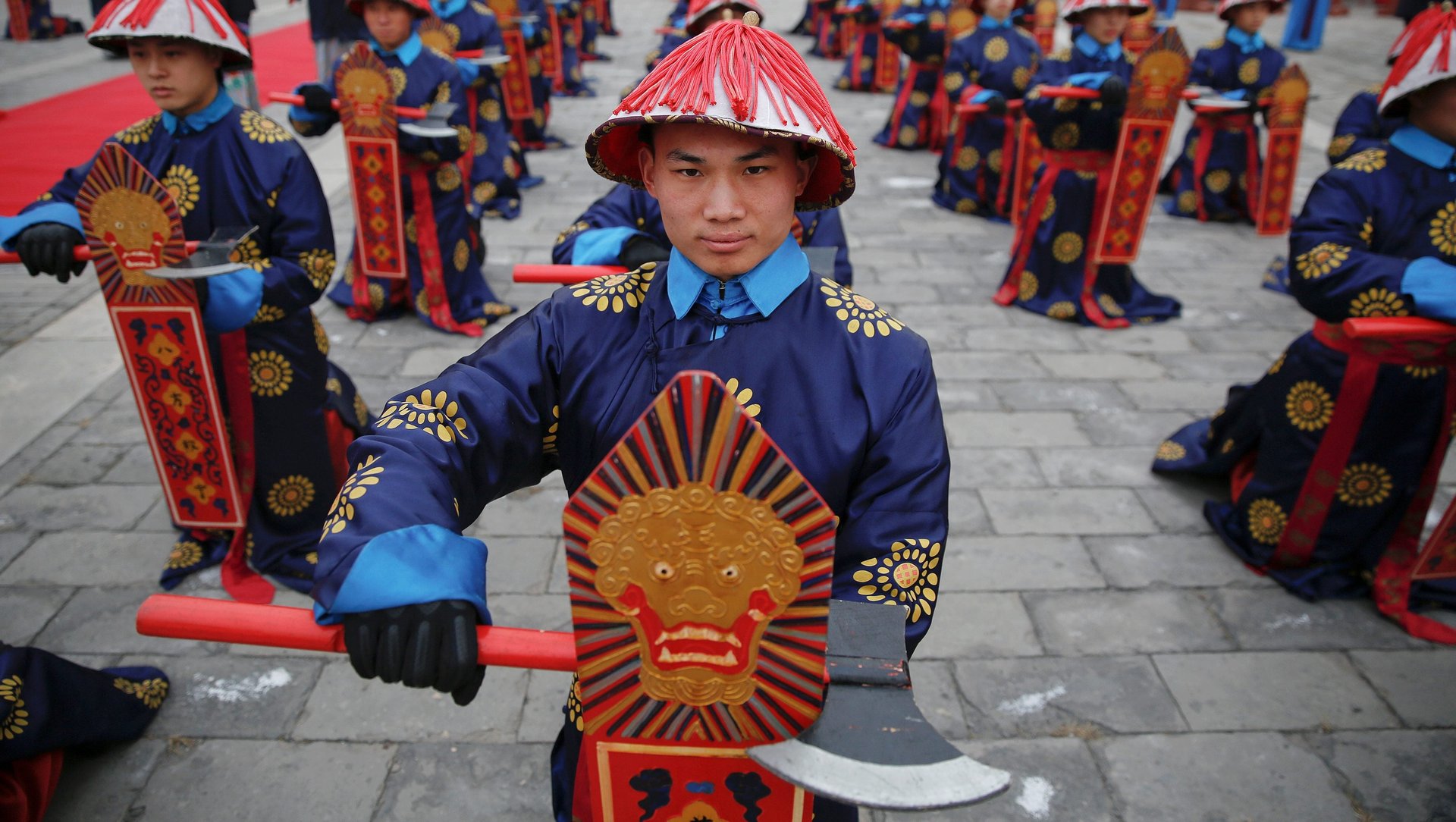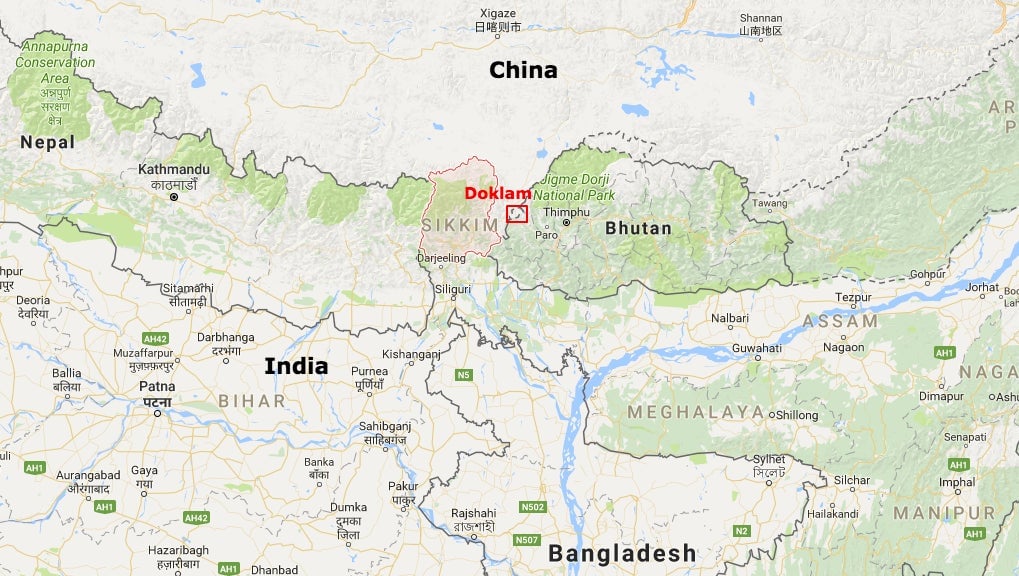When’s a treaty too old to be of “practical significance”? Only when China says it is
Cross-border tensions between India and China, who share a border more than 2,000 miles long, are common. Both sides regularly accuse the other of incursions, but this time it’s much more serious—an editorial this week in China’s state-controlled tabloid Global Times warned that should a clash occur India “will suffer worse losses than in 1962,” a reference to the two countries’ bitter war.


Cross-border tensions between India and China, who share a border more than 2,000 miles long, are common. Both sides regularly accuse the other of incursions, but this time it’s much more serious—an editorial this week in China’s state-controlled tabloid Global Times warned that should a clash occur India “will suffer worse losses than in 1962,” a reference to the two countries’ bitter war.
China’s flurry of statements in recent days on the issue also showed a wide disconnect on its stance on two very different treaties with Britain, nearly a century apart.
Tensions flared up last month after Chinese troops with road-building equipment entered the Doklam plateau region, an area where an official border is yet to be demarcated between Bhutan and China. The remote Himalayan kingdom of Bhutan, which relies on India for its security, called in the Indian armed forces for assistance to the disputed area, which is very close to the Indian state of Sikkim. China has called for the Indian troops to be removed, saying the area where the construction was happening is under its jurisdiction; India has said its troop movements are in line with its accords with Bhutan.
In the war of words over who’s right, both India and China have cited past agreements—in some cases quite old ones. China said last week its rights over the area in question are clearly established by an 1890 agreement, the Convention of Calcutta.
“Convention Between Great Britain and China Relating to Sikkim and Tibet, which was formally signed between the Qing government of China and the Great Britain in 1890, explicitly stipulated the boundary between Xi Zang [Tibet] of China and Sikkim of the Great Britain,” said China’s foreign-ministry spokesman in a briefing this week.
One tiny thing: that treaty was signed between parties who are obsolete today. Britain had sway at the time over Sikkim thanks to the 1817 Treaty of Titalia between the British East India Company and the area’s ruler, reinstated by British forces. But Sikkim is no longer “of the Great Britain”; it became a part of India in 1975. On the Chinese side, the treaty was negotiated by the Qing dynasty, whose rule ended in the early 20th century.

Still, China’s stance may be perfectly tenable under international law. Successor states can and do often abide by treaties of the rulers they replaced. For example, the 99-year lease that gave the New Territories in Hong Kong to Britain until June 30, 1997, was also negotiated during Qing rule. But the People’s Republic of China, the communist state established in 1949, stuck by it.
China says successive Indian leaders have chosen to abide by the terms of the convention, bringing it into the present day. “Successive governments of both sides have all recognized the effectiveness of the convention and repeatedly confirmed that in a series of official documents and talks,” the Chinese foreign ministry said. India says this misrepresents its stance, and recent media reports have cited letters and press conferences of past Indian prime ministers in support.
In a case of unfortunate timing, China’s invocations of the 19th-century agreement came just as China outright dismssed (paywall) a far more recent agreement with Britain, the Sino-British Joint Declaration, which set out the principles for Hong Kong’s special status—including its capitalist system and far greater freedoms than the mainland—after its return to Chinese sovereignty in 1997. It was signed by Chinese premier Zhao Ziyang on behalf of the People’s Republic of China and then prime minister Margaret Thatcher for the United Kingdom in December 1984, and formally registered with the United Nations in 1985.
On the 20th anniversary of the transfer of Hong Kong from British to Chinese rule, Beijing had this to say about that treaty:
I want to stress that Hong Kong is China’s SAR (Special Administrative Region), and Hong Kong affairs belong to China’s domestic affairs. The Sino-British Joint Declaration (1984) clearly marks the transitional period off from China resuming the exercise of sovereignty over Hong Kong. It’s been 20 years now since Hong Kong’s return to the motherland, and the arrangements during the transitional period prescribed in the Sino-British Joint Declaration are now history and of no practical significance, nor are they binding on the Chinese central government’s administration of the Hong Kong SAR. The British side has no sovereignty, no power to rule and supervise Hong Kong after the handover.
Perhaps that’s one thing that can unite India and China, and bring them back from the brink: Blame Britain.
Many of the border tussles that the two countries face today date to the days of the Raj and the Great Game, and a slew of treaties negotiated by Britain. Bitterness over some of these agreements is still strong in China, where they are dubbed the “unequal treaties.” For obvious reasons, the Calcutta Convention of 1890 doesn’t appear to be in that category for the moment.